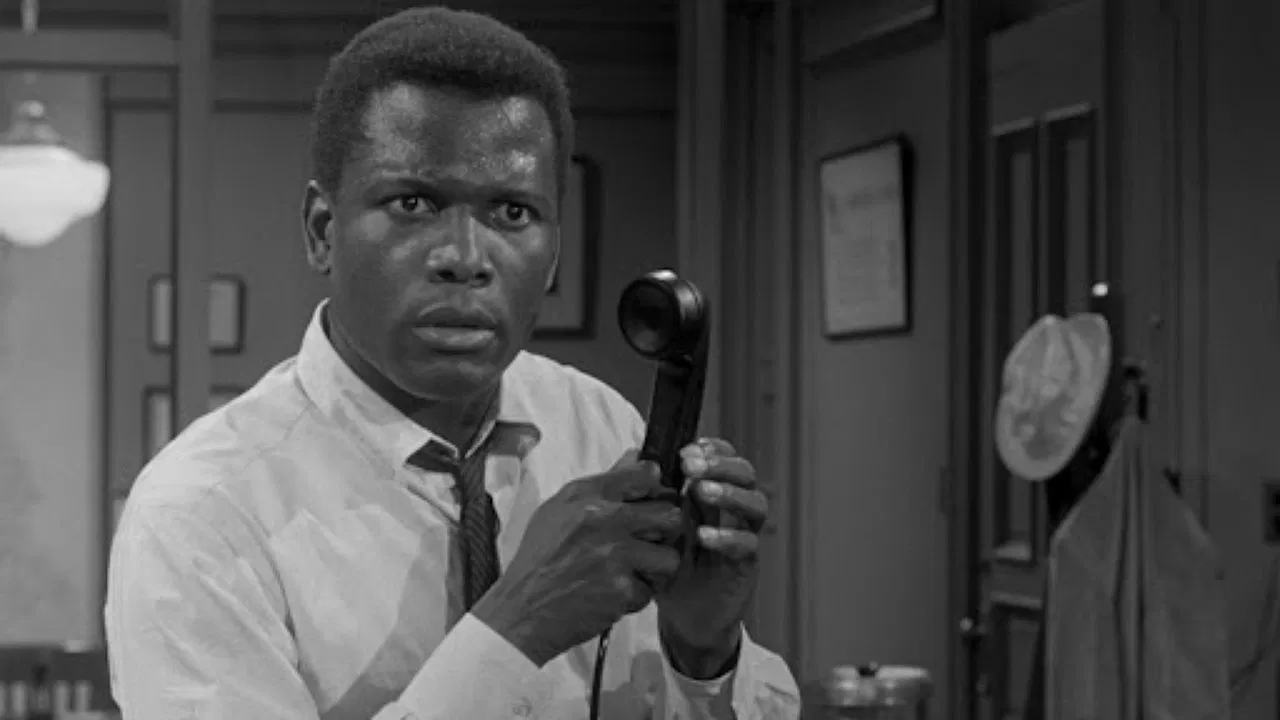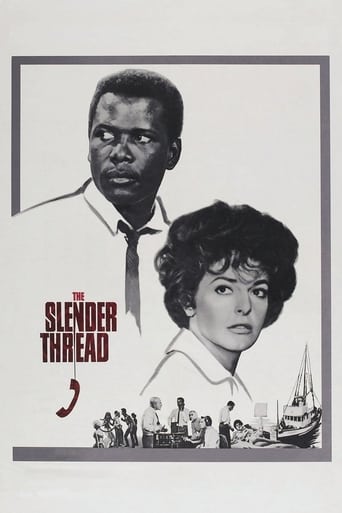

Well Deserved Praise
... View MoreThat was an excellent one.
... View MoreAlthough it has its amusing moments, in eneral the plot does not convince.
... View MoreIf you're interested in the topic at hand, you should just watch it and judge yourself because the reviews have gone very biased by people that didn't even watch it and just hate (or love) the creator. I liked it, it was well written, narrated, and directed and it was about a topic that interests me.
... View MoreI started watching this movie only half-heartedly. I didn't even expect that I would finish. But it wasn't long before the plot had me hooked. And Poitier and Bancroft act superbly to bring there characters to life.The writers and director did a great job of creating suspense and keeping you interested. Poitier's anxiety at trying to help the suicide victim is so palpable that I think I was sweating as much as he was. I particularly liked the way they kept you guessing at what possibly could have happened to this woman to send her off the edge.Bancroft does a wonderful job at creating true sympathy for her character, but at the same time, you wonder about the choices she made.
... View MoreI saw this title coming up on TCM, read the synopsis, and KNEW instantly that this one I had to see. And like I said, I should have known. Poitier is probably one of the top ten dramatic actors of ALL TIME! I'm not sure I've ever seen a bad film that he was in. This little gem, was tremendous. I don't comment on many film's but when I see one I haven't seen before, and it's as good as this one, I can't restrain myself. Watch it when/if you can, and you won't be disappointed! There are many subplots and twists to this film, and it has many fine performances, including Telly Savalas, and Ann Bancroft. There are small parts, for a young Dabney Coleman, and one of Ed Asner's early ones as well. I am a classic movie buff, with over 800 titles in my library, and I simply love it when I come across a new one that I hadn't seen/heard of before. Like I said, Watch this one when/if you can.
... View MoreI haven't seen "The Tender Thread" but am certain it was a knock off of a much earlier TV version. Sidney Poitier was in that one too, but to the best of my recollection, there was only one set, the hotline phone room. The basic plot seems similar to your commentator's impressions of Tender Thread, but in the end, they get hold of the husband and work him over pretty good for getting mad about his wife's deceit and blame him for Moms feeble suicide attempt. I consider the earlier version the beginning of the lunatic notion that a man should be responsible for another's children. Monte Haun
... View MoreI remember seeing this film a few years ago and it stuck with me for some reason. looking at it again, i know why. The whole thing has a mid-1960s melancholy to it, almost with a tinge of the horror films that would emerge in the late 1960s, like rosemary's baby, or, roman polanski's first horror film 'repulsion' which was made in the same year as slender thread. one of the most amazing things about this film is the opening sequence which uses all kinds of staples of film shooting styles and techniques of the mid-late 60s, which themselves add a melancholic tone to the film. There is the space needle, which looks positively cold-war futuristic with the car going up the side of it; the world's fair architecture with its modernist water fountains--which foreground the first shot a desperate-looking Anne Bancroft, and of course, the locks, dams and highways of the Seattle waterfront. You can't help but get nostalgic seeing the Seattle of this time. Not to mention that Anne Bancroft's husband is a fisherman. I've never been to Seattle but i'm pretty sure most of this stuff is gone. (wasn't there some attempt to save the old docks in a big standoff in 1964?). If you want to see another view of Seattle in the early 70s, I recommend seeing "Cinderella Liberty" with James Caan. Then there are even more visual and aural elements which help create the mood: the shots of the 'backroom' of the telephone company--with its immense network of phone lines--actual physical lines!--and the women operators unplugging and plugging cables to connect one line to another. These are bygone days! You wonder if Sydney Pollack wasn't subtly, or not so subtly, making a comment on the postwar bureaucratized society itself. Another treat is the 'Hyatt hotel' sign towards the end of the film. Total 1960s visual. And of course, Quincy Jones' soundtrack with some great Sam and Dave-style jazzy organ music.Visuals aside, this is a great film. Again, dealing with some rather dark issues. The scene where Anne Bancroft comes home and sees her husband in the living room looking depressed...you don't know if he's having a psychotic episode, has lost his job or is on LSD. Anne Bancroft, overall, is a disturbing character. Perhaps more disturbing is that she would play another tragic character two years later - Mrs. Robinson, in The Graduate. Sidney Poitier is in usual form - the studious, morally-superior black in a predominantly white setting. I like what someone else here said - that the film very subtly has a subtext on race (how could a 1960s film showing blacks and whites in the same frame not? How could we as Americans not read race into the film?) while never dealing with race explicitly. This is actually one reason I think Sidney Poitier's characters and films are an important, and yet lost, representation of race relations. For all the flack that he got in the racially charged mood of the 1960s as an assimilationist good black who whites could accept, especially as he was the first black protagonist in films (it didn't help that he was West Indian, having grown up in the Bahamas). to me I still see some kind of Caribbean AND Black persona in his characters which I think he 'sneaks in' in subtle ways. His classic move is some breaking point at which he can't take any more -- whether its racial bigotry, disrespect for authority, or something else -- and he delivers some great speech of moral indignation. He does it in 'pressure point', in 'to sir with love', 'in the heat of the night', and maybe a few others. It may be pretentious at times, but this 'style' disappeared after the late 60s as blaxploitation with its overly masculinized and violent characters became the dominant representation in film.Anyway, all the political and social analysis aside, this is really a great film.
... View More